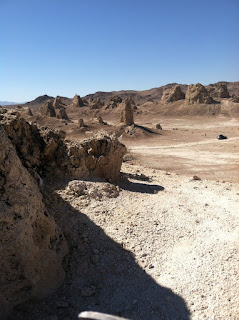| For this interview, I interviewed Dr. Stuart Sumida from CSU San Bernardino. His career is a very diverse one. He works with animators to accurately represent animals, he's a paleontologist, and he teaches comparative anatomy at CSUSB. This combination made him a very interesting interviewee and a great source of information for my project. |
1. What is the most important thing I learned from the interview?
- The most important thing, I think, that I learned is that the best way for a paleontologist to reconstruct the life of a prehistoric creature is by collaborating with other paleontologists with different specialties. I learned that through collaboration with different specialties a large amount of information can be uncovered about an ancient creature's life.
2. How has your approach to interviewing changed over the course of your senior project?
- I think my questions have become better as my senior project progressed. Also, I think that my ability to guide the interview has improved throughout my project.
To access my interview please click here.




























